-
CATEGORY ::
- All Seeds /
- All Flower Seeds





Allium Cernuum Seeds
About...
Nodding Pink Onion (Allium Cernuum) - Lovely in any garden or meadow, Nodding Pink Onion, can easily be grown from flower seeds. Allium Cernuum can typically be found on ledges, in dry meadows, gravel, rocky or wooded slopes. Nodding Pink Onion will produce delicate pink flowers in late spring and will bloom throughout the summer. Allium Cernuum is a wonderful addition to any naturalized setting.MORE FLOWER OPTIONS
Planting Directions
TEMPERATURE
64 - 72F
AVERAGE GERM TIME
56 - 70 days
LIGHT REQUIRED
Yes
DEPTH
1/8 inch
SOWING RATE
6 seeds per plant
MOISTURE
Keep moist until germination
PLANT SPACING
12 inches
Nodding Pink Onion (Allium Cernuum) - Lovely in any garden or meadow, Nodding Pink Onion, can easily be grown from flower seeds. Allium Cernuum can typically be found on ledges, in dry meadows, gravel, rocky or wooded slopes. Nodding Pink Onion will produce delicate pink flowers in late spring and will bloom throughout the summer. Allium Cernuum is a wonderful addition to any naturalized setting.
Deer resistant blooms
Nodding Pink Onion is deer resistant but very attractive to pollinators such as honeybees, butterflies, and hummingbirds!

Flower seed | allium cernuum
Specifications
This flower is distinctive and easy to identify with nodding, pink flowers. Nodding Onion is drought tolerant, and it survives in challenging sites where other plants refuse to live. Native to the United States, 12 - 18 inch Allium Cernuum thrives on rocky areas, dry woodlands, and prairie land that does not receive much water.
Allium Cernuum seeds grow lovely plants among rockery, in the woodland popping up through Carex foliage, nestled up against a tree trunk, or in the sunny rock garden. Allium Cernuum readily reseeds itself and will regrow from its own flower seeds. If this is not desired, deadhead when the flowers fade so its flower seed is not dropped on the ground.
- Seeds require cold stratification to germinate. Place seeds in a plastic bag with potting soil or a damp paper towel and refergerate for 6 to 8 weeks prior to planting.
- Sowing Rate: 6 seeds per plant
- Average Germ Time: 56 - 70 days
- Keep moist until germination
- Attracts honeybees, butterflies and hummingbirds
- Depth: 1/8 inch

Flower Care
Grow in fertile, well-drained soil in full sun. Plant bulbs 2 - 4 inches deep in autumn; plant clump-forming species with rhizomes at, or just below, the soil surface in spring. Grow alliums from areas with hot, dry summers in sandy, loam-based potting compost in an alpine house; keep dry when dormant in summer.
- Height: 12 - 18 inches
- USDA Zones: 3 - 9
- Season: Perennial
- Deer Resistant: Yes
- Drought Tolerant: Yes
Common Questions
Do I need to deadhead my allium cernuum?
To prevent any unwanted spread it is recommended to deadhead these flowers before they the seed set.
What is the best location to plant allium?
Grown in sandy to average, dry to medium moisture well drained soil in full sun to partial shade. Light afternoon shade is appreciated by this plant in hot summer climates.
Does allium attract pollinators?
Yes, allium cernuum attracts butterflies.
Does allium make a good cutflower?
Yes, allium cernuum makes a good cutflower with a nice fragrance as well.
Planting Directions
TEMPERATURE
70 - 75F
AVERAGE GERM TIME
21 - 28 days
LIGHT REQUIRED
Yes
DEPTH
Do not cover the seed but press into the soil
SOWING RATE
4 seeds per plant
MOISTURE
Keep seed moist until germination
PLANT SPACING
10 inches
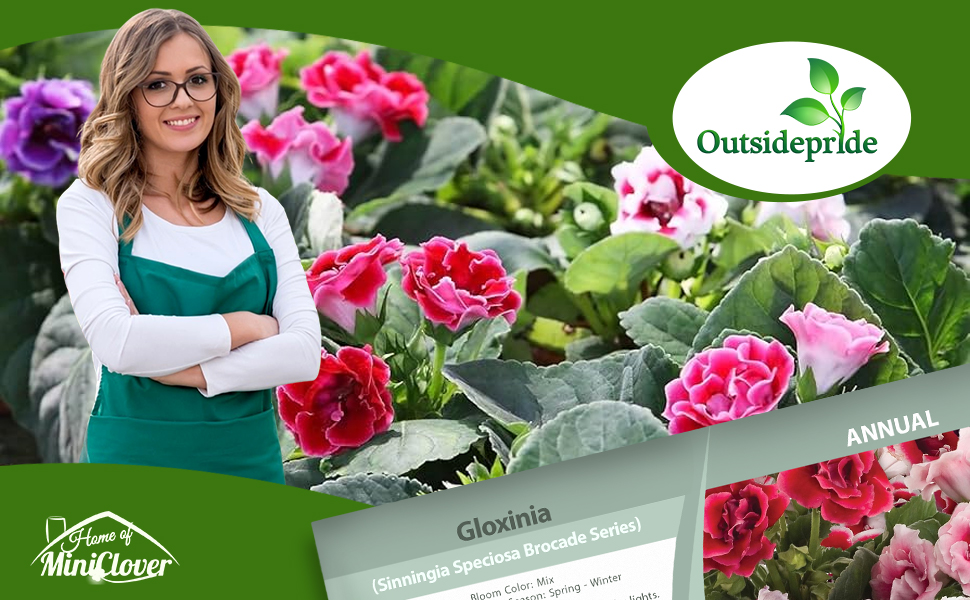
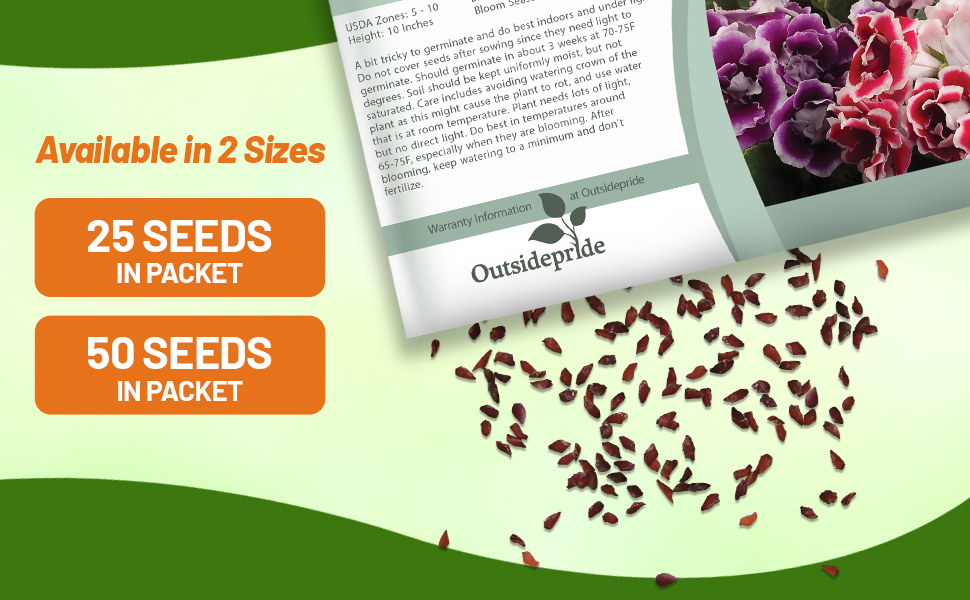
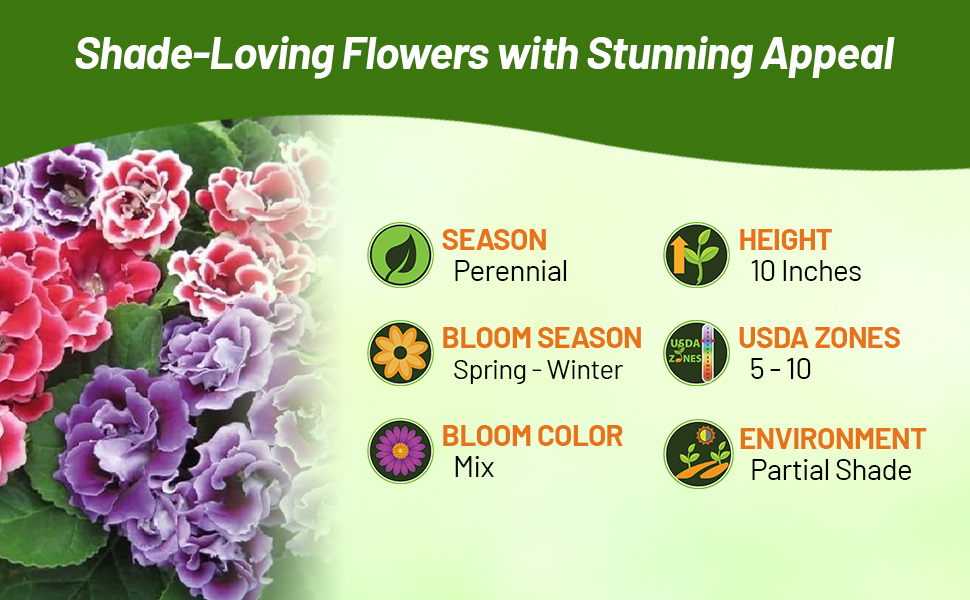
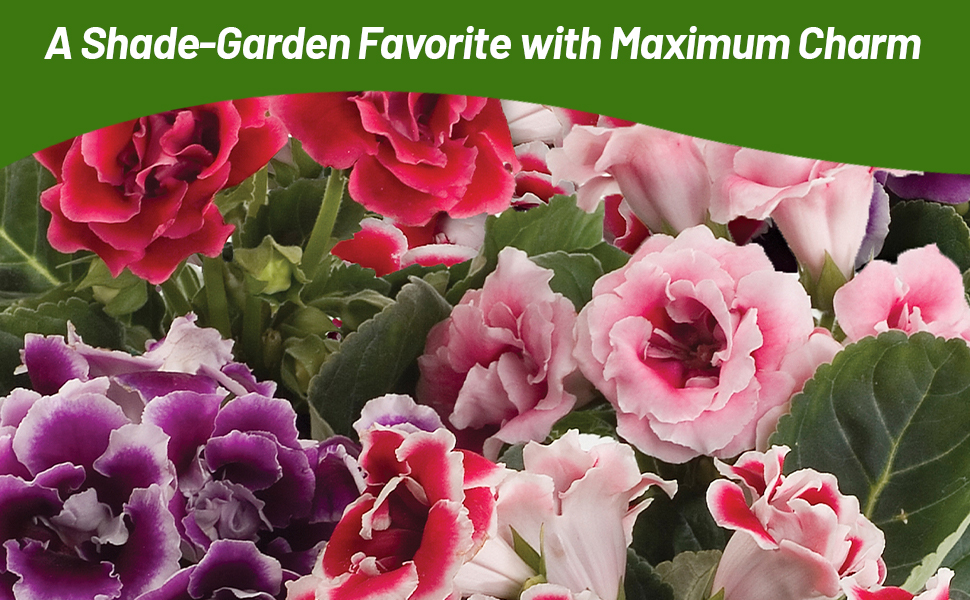
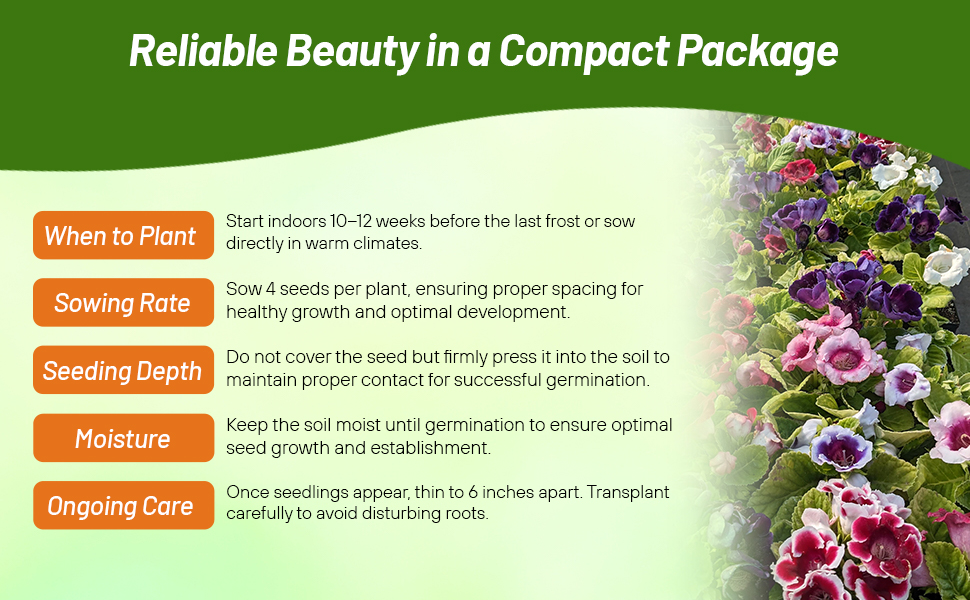
Gloxinia (Sinningia Speciosa Brocade Series) - Sow Gloxinia seeds to produce a beautiful mixture of red, blue, and white blooms. These compact Gloxinia plants blossom four to six months after sowing. They will flower for about 2 months, go dormant for about 2 months, and then begin growing again and start flowering. Gloxinias make a great house plant, giving wonderful, colorful blooms! Sinningia Speciosa is often referred to as Florist's Gloxinia or Brazilian Gloxinia.
Gloxina seeds are a bit tricky to germinate and do best indoors and under lights. Do not cover the flower seeds after sowing since they need light to germinate. Sinningia Speciosa seeds should germinate in about 3 weeks at 70 - 75F degrees. Soil should be kept uniformly moist, but do not keep it saturated. Florist's Gloxinia care includes avoiding watering the crown of the plant as this might cause the plant to rot, and use water that is at room temperature for watering. The Brazilian Gloxinia plant needs lots of light, but no direct light. Gloxinias do best in temperatures around 65 - 75F degrees, especially when they are blooming. After blooming, keep watering to a minimum and don't fertilize.
Common Questions
Do I need to prune my gloxinia?
To encourage a longer bloom season, you will need to deadhead your spent flowers. After the bloom period is over and your plant enters dormancy, prune back any dead or dying foliage.
My leaves are dropping, what do I do?
This can occur from sudden temperature changes such as drafts.
My leaves look scorched, why?
Direct sunlight can burn the leaves of your gloxinia, causing them to scorch and crisp.
My flowers are losing their vibrancy, what do I do?
This is typically caused by inadequate light move your plant to an area with more light but not direct sunlight.
Planting Directions
TEMPERATURE
55 - 65F
AVERAGE GERM TIME
14 - 21 days
LIGHT REQUIRED
Yes
DEPTH
Surface sow seed and light cover no more than 1/8 inch deep
SOWING RATE
3 - 5 seeds per cell or approximately 5000 seeds covers 100 square feet
MOISTURE
Keep seeds moist until germination
PLANT SPACING
8 inches
Leptosiphon Mix (Leptosiphon Hybrida French Hybrids Mix) - Start Leptosiphon seeds to start these dainty little flowers. Leptosiphon French Hybrids has the synonymous botanical name Linanthus androsaceus. This low-growing annual has fern-like foliage and hundreds of sweet little half inch star-shaped flowers that shine out from the foliage. The colors are mixed and bright in shades of rose, yellow, orange and cream. Leptosiphon uses include edging the front of the flower bed, containers, edging a pathway, or as a ground cover. Commonly known as False Baby Stars, this annual is lovely if it is allowed to spill over the edges of rocks or containers. It makes a carpet of color and is stunning!
Grow Leptosiphon seeds directly outside in a prepared seedbed after frost danger has passed. Press the flower seed into the soil and lightly cover. False Baby Stars flowers perform best in full sun, and they prefer rich, well-draining soil.
































